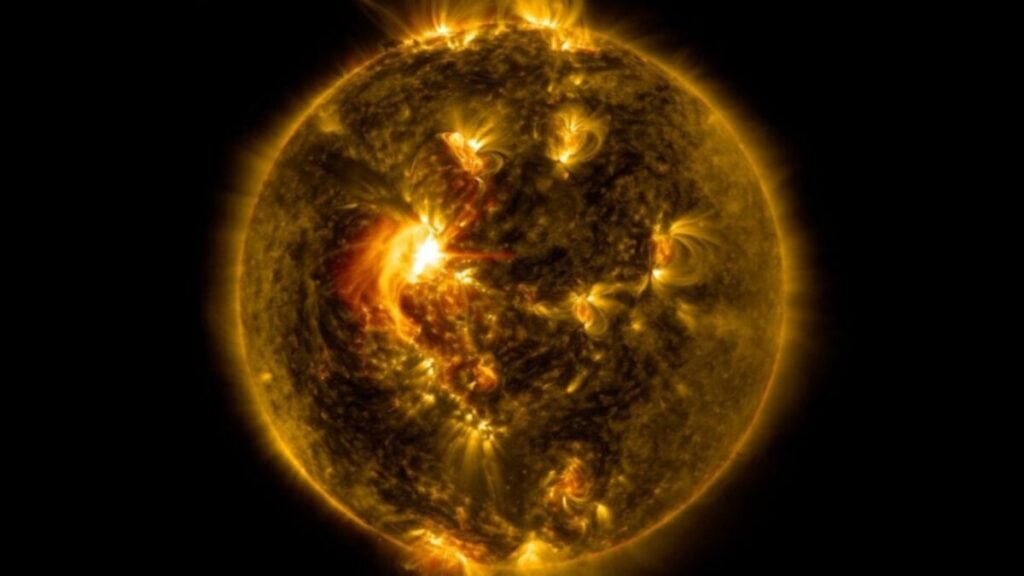The sun is entering a new and unexpected active stage.

When solar activity reached its lowest point in 2008, astronomers reasoned that the sun was entering a period of historically low activity. They were wrong.
A new study published on September 8th in suggests that 2008 marked the beginning of a continuous increase in solar activity. To clarify, this “reversal” extends beyond the known 11-year cycles that the sun usually follows. Specifically, researchers found that since 2008 there has been a slight increase in many of the sun’s “vital signs,” such as the frequency of solar winds and the strength of the magnetic field.
“All signs pointed to the sun entering a prolonged phase of low activity,” said Jamie Jasinski, lead author of the study and researcher at NASA’s Jet Propulsion Laboratory. “That’s why it was surprising to see that trend reversing. The sun is slowly waking up.”
Reading the solar signals
The solar cycle – an approximately 11-year interval marked by the rise and fall of sunspots – is a well-documented phenomenon. The sun’s magnetic field changes polarity every 11 years, returning to its original state after completing two complete solar cycles. This 22-year magnetic phase is known as.
Of course, like other astrophysical patterns, this rule has some exceptions that science still does not fully understand. There are many historical records that show clear evidence of long periods of unusually low solar activity lasting about 30 to 40 years, Jasinski said.
Predicting these trends is much more difficult, Jasinski added. But data from the 1980s really seemed to indicate that the sun was heading towards a historic lull, according to researchers. However, a more thorough scrutiny of solar activity after 2008, when solar activity reached an unprecedented low, revealed a clear reversal of the weakening trend.
After 2008, “the trend of decreasing solar winds ended,” explained Jasinski. “Since then, plasma parameters and the magnetic field have been continuously increasing.”
The researchers’ analysis shows that the sun is likely “recovering” from a 20-year decline in solar activity. Between 2008 and 2025, key indicators of solar winds such as speed (~6%), density (~26%), temperature (~29%), and thermal pressure (~45%), among other metrics, have been steadily increasing. This suggests that the recent period of unusually weak solar activity may have been an exception to the broader, long-term solar trend, according to the study.
Solar activity and space weather
The sun is at the center of our solar system. Every time the star spits out bursts of radiation or plasma bubbles, the planets feel the heat. Stronger solar activity can compress the protective magnetic shield surrounding each planet, including Earth.
This makes Earth much more vulnerable to brutal radiation and plasma jets from the sun. When this happens, solar weather can For space missions, direct encounters with solar weather events could harm the health of astronauts and spacecraft, making it imperative for NASA to better understand the nature of these events.
The allow science than ever before. However, this new study suggests that it’s always worth taking a second look, due to the elusive and uneven behavior of our star. In their work, the authors point out that the “continuous increase (over 16 years) in the dynamic pressure of solar winds will have consequences” in the solar environment.
The increasing trend has already surpassed the 11-year mark, suggesting that the sun is in one of those rare extended cycles. It is unknown when or how it will end, according to researchers.
“Longer-term trends are much less predictable and are something we still don’t fully understand,” Jasinski added.
This article has been translated from Gizmodo US by Romina Fabbretti. can find the original version.






